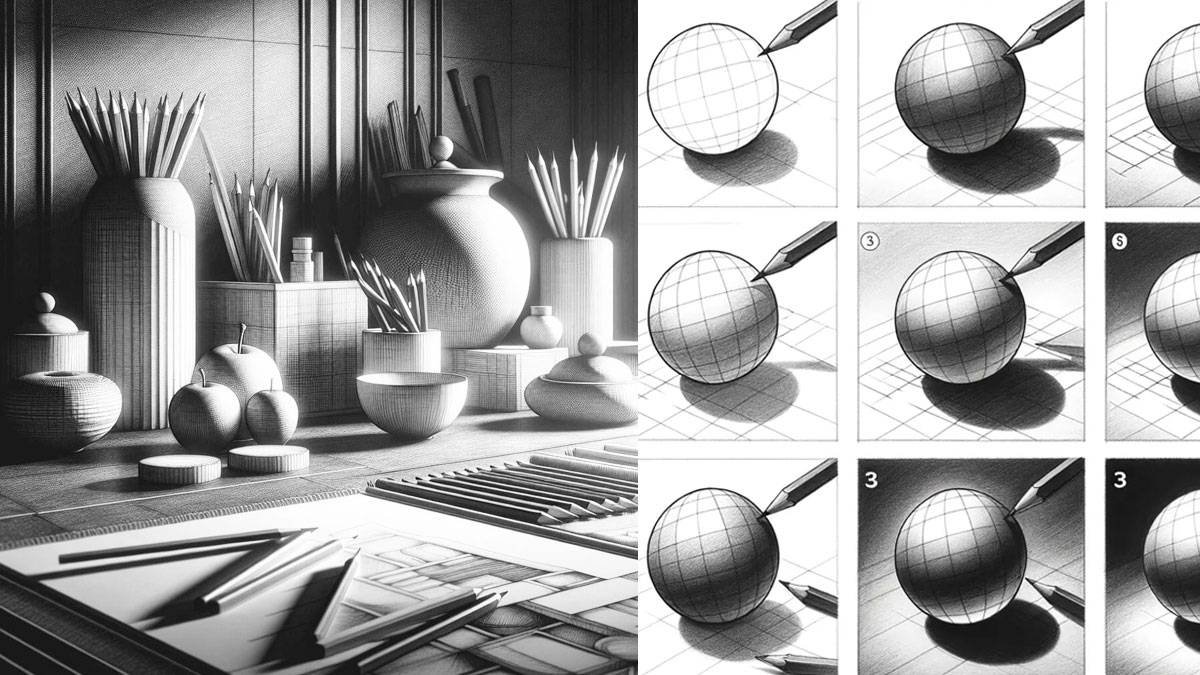Dive into the secret world of pencil drawing, where each stroke is a step closer to zen. Discover why this silent art form is whispering sweet nothings to the hearts of creatives everywhere. Click to reveal the magic.
Picking Your Pencil Arsenal
Before you embark on your grand adventure into the world of pencil drawing, you’ll want to gather your trusty tools. Just like a knight needs their sword, you, my dear artist-to-be, need your pencils. But not just any pencils—oh no!—you need the right grades of graphite to make your mark on the world… or at least on the paper.
The ABCs of Pencil Grades
The pencils you choose can make or break your masterpiece. Think of pencil grades as the spice rack of your drawing kit. Just as you wouldn’t season a steak with sugar, you wouldn’t sketch a delicate feather with a dark and brooding 6B pencil, would you?
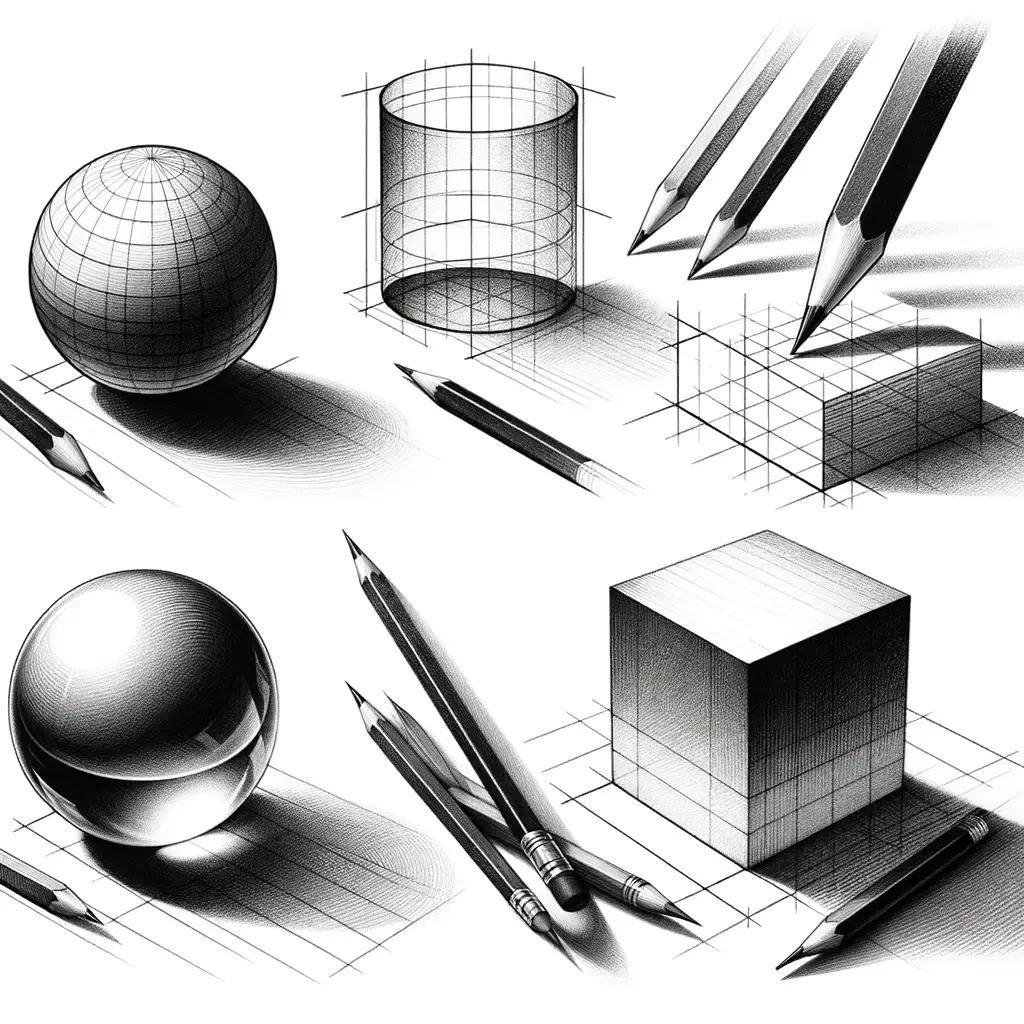
Here’s a handy table to guide you through the jungle of jargon:
| Pencil Grade | Description |
|---|---|
| 9H | Harder than a math test on a Monday morning – light marks |
| 2H | Still hard, but you can see it without squinting |
| HB | The ‘average Joe’ of pencils – good for everyday doodling |
| 2B | Getting softer and darker, like a nice chocolate brownie |
| 6B | Soft enough to make a smudge just by looking at it – great for shadows |
For the nitty-gritty of your shading and detailing adventures, you’ll want to go for softer pencils, like the 6B, which are darker and more suitable for tonal work (Cowling and Wilcox). Remember, the ‘B’ stands for ‘buttery’ (not really, but it helps to remember they’re soft), and the ‘H’ stands for ‘hard’ (as in, hard to see if you’re left-handed).
The Texture Tango: Paper Choices
Now, let’s talk about your dance floor—the paper. You wouldn’t do the tango on a trampoline, so why would you pair your perfect pencil with less-than-perfect paper? The texture of your paper can make your pencil pirouette or plummet.
If you’re going for the grandeur of landscape drawing or the delicacy of figure drawing, a medium-texture paper will be your best partner. It’s versatile, forgiving, and won’t leave you with unsightly smudges (most of the time).
For those of you who love the drama of deep shadows and the subtlety of light, a smooth paper will make your 6B’s heart sing. But if you’re all about the details, a fine-tooth paper will let your 2H lead leave its mark with precision.

Choose wisely, and your paper will support every stroke, dab, and cross-hatching move you make. Neglect this choice, and you’ll be erasing more than just your mistakes—you’ll be wiping away your dreams of pencil drawing glory.
Now that you’re equipped with the knowledge of pencil grades and paper textures, you’re ready to start sketching the basics. Remember, in the world of art, your arsenal is your ally. Choose with care, and let the creativity flow!
Mastering the Pencil Grip
Before you can start transforming your grand ideas into graphite masterpieces, you’ll need to get a good handle – quite literally – on your pencil. It’s not just about holding your trusty pencil; it’s about commanding it to dance across the page at your whim. Let’s dive into the basics of pencil grip and learn how to wield your pencil with the precision of a maestro and the pressure control of a ninja.
Sketching the Basics
Alright, Picasso-in-training, let’s talk about the foundation of pencil drawing: the sketch. When you’re sketching, think of your pencil as an extension of your arm. You’re not just drawing; you’re choreographing a ballet on paper. Hold your pencil further from the tip for a looser, more expressive line, perfect for capturing the essence of your subject with gesture drawing.

Now, if your sketches look more like something out of a horror movie than the art gallery, don’t fret! Every scribble is a step towards mastery. Experiment with different grips – overhand for bold, sweeping motions, and tripod for those tiny details that bring your line drawing to life. Remember, every great artist started with a doodle!
Precision and Pressure
The secret sauce of pencil drawing is pressure control. It’s what turns a flat circle into a glorious, three-dimensional sphere that pops off the page. Mastering the delicate dance of pressure is key to adding depth and dimension to your landscape drawing or the twinkle in the eye of your figure drawing.
Think of your pencil as a feather – apply too much pressure, and you might just snap it! Start with a light touch; you can always darken your lines later. Use a firmer grip and increased pressure for bold, definitive lines that define the boundaries of your artistic territory. And when it’s time for delicate shading, loosen up and let your pencil glide like it’s on a Zamboni across an ice rink.
Here’s a pro tip: practice creating a value scale. Start with the lightest touch you can manage and gradually increase the pressure until you’re carving into the paper like it owes you money (but please, no paper was harmed in the making of this art). This simple exercise will train your hand to understand the many shades of grey (at least fifty, I hear).
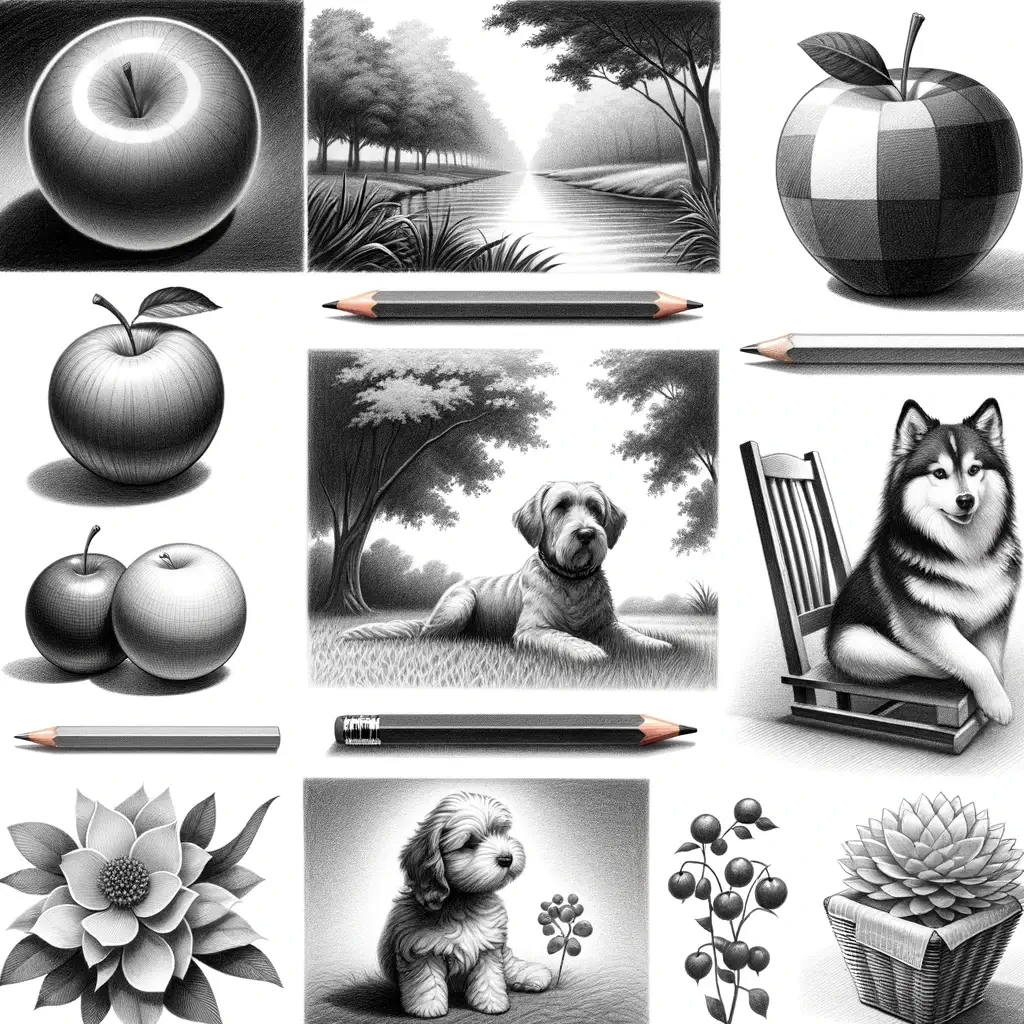
By mastering these pencil-wielding techniques, you’re well on your way to creating artwork that will make your friends and family say, “Wow, when did you get so good?” Keep honing those skills, and remember, every squiggle brings you closer to your magnum opus. Now, go forth and conquer that blank page with the confidence of a seasoned artist! And don’t forget to check out more advanced techniques like cross hatching and perspective drawing to keep leveling up your game.
Shading: More Than Just Scribbles
Alright, my artistic friend, let’s dive into the whimsical world of shading! No, we’re not talking about throwing shade; we’re talking about the kind that turns your flat doodles into jaw-dropping masterpieces. So grab your pencils, and let’s shade like nobody’s watching!
Hatching Your Masterpiece
Hatching is like playing the piano on your paper, but instead of notes, you’re creating values with parallel lines. It’s a classic move in the pencil drawing playbook, and for good reason. The closer the lines, the darker the area. It’s a simple yet effective way to add depth to your drawing. Imagine you’re tickling the paper with gentle lines, and voilà—you’re hatching! For more on the basics of how to draw, check out our other articles.
The Cross-Hatching Craze
If hatching is the peanut butter of shading techniques, then cross-hatching is the jelly. It’s where you get to go wild and layer perpendicular lines over your hatching, creating a crisscross pattern that’s as satisfying as finding the perfect parking spot.

This technique is perfect when you want to build up areas of value and show the world you mean business with your line drawing.
Stippling for Texture Wizards
Now, let’s talk about stippling, the darling of the texture world. It’s like dot-to-dot without the dots ever meeting. By dotting your way to glory, you control the value by how close together those tiny dots are. It’s perfect for areas that need a touch of texture magic, like the rough skin of a lizard or the stubble on your uncle Bob’s face. Put on some tunes and start stippling your way to texture town!
Blending Like a Boss
Last but not least, let’s smooth things over with blending. Think of it as the peacekeeper between harsh lines and the rest of your drawing. Using a blending stump, or even your trusty finger (clean, please), you can soften up those lines and transition like a pro from light to dark. It gives your drawing that oh-so-realistic look, making your apples look juicy enough to eat and your portraits ready for their close-up.
So there you have it! Shading isn’t just about darkening areas; it’s about making your pencil drawing come to life. Whether you’re hatching, cross-hatching, stippling, or blending, remember to have fun and let your creativity shine. And if you’re looking to up your game in the shading department, don’t forget to check out our tutorials on landscape drawing, figure drawing, and perspective drawing. Happy shading!
Light and Shadow Play
Welcome to the magical world of light and shadow, where you, the budding artist, can transform flat sketches into dramatic, three-dimensional masterpieces. It’s like being a wizard, but instead of a wand, you wield a mighty pencil!
Understanding Value and Contrast
You know how in those old black-and-white movies, the play of light and dark creates mood and drama? That’s all about value and contrast, my friend, and your pencil drawing craves it! Light creates a range of contrasting values, from the bright highlights to the mysterious shadows.
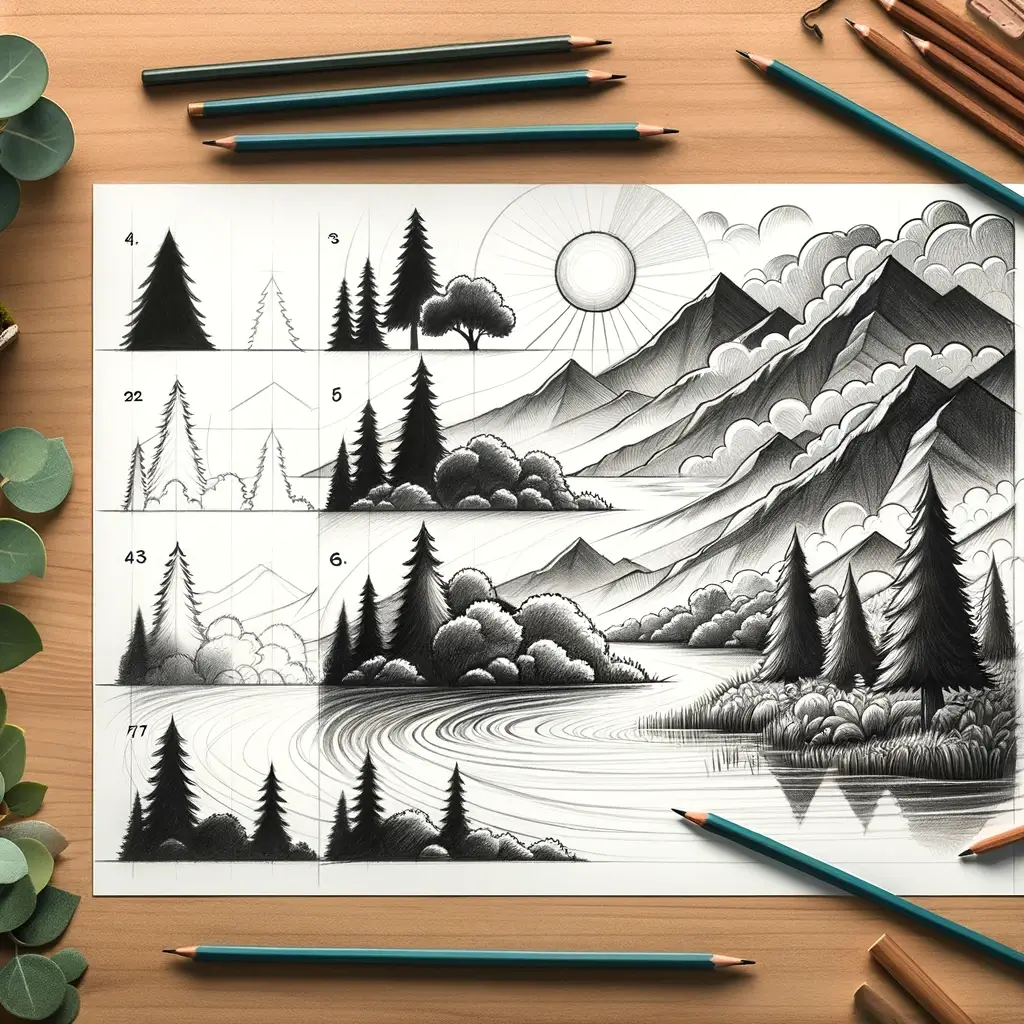
Imagine a light bulb hanging over an apple. The part of the apple facing Mr. Bulb will be basking in the limelight, showing off its highlight. As the surface curves away, it gets darker, creating what we call mid-tones. Then there’s the core shadow, the darker band where light is scared to tread. And finally, the cast shadow, the apple’s dark sidekick on the table.
| Element | Description |
|---|---|
| Highlight | The brightest area where light hits directly. |
| Mid-tone | The transition area receiving less light. |
| Core Shadow | The darkest area on the object itself. |
| Cast Shadow | The dark area projected onto another surface. |
Creating contrast is not just about going from dark to light; it’s about making those elements pop and dance on your paper. High contrast can be dramatic, low contrast more subtle; it’s up to you to set the stage.
Creating Volume with Shading
Shading isn’t just for coloring inside the lines; it’s about convincing the viewer that your flat drawing is a 3D object taking up space. With gradual value changes, you can turn a circle into a sphere that looks like it’s going to bounce off your sketching pad.
Let’s play with some basic shapes. Start with a sphere. Apply light pressure for the lighter areas and gradually increase pressure for the darker areas. Keep your movements smooth—no sudden jumps in darkness. Remember, it’s like a gentle sunrise, not flipping a light switch. For cubes and other angular objects, keep those sides consistent in value to maintain their form.
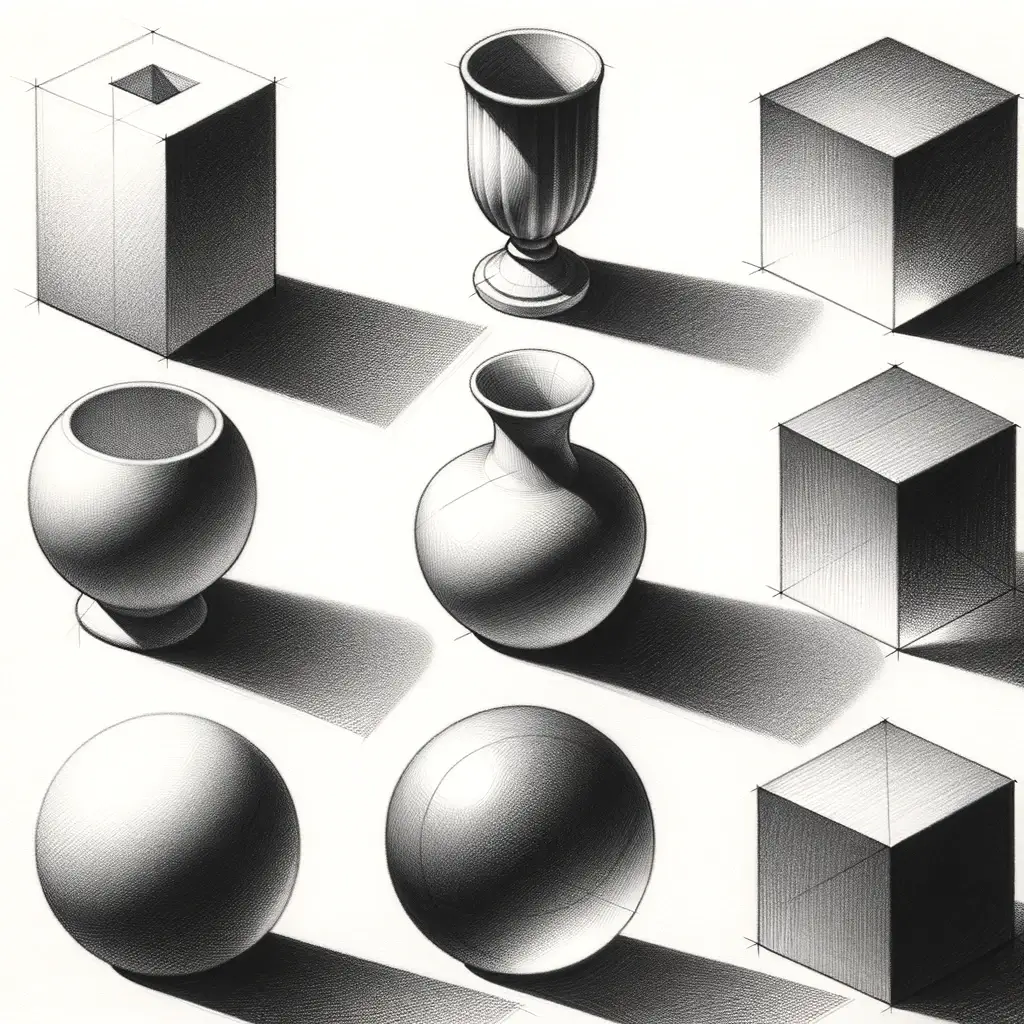
It’s all about practice. Begin with straightforward shapes, then challenge yourself with complex objects or even a figure drawing session. Before you know it, you’ll be adding volume to everything from apples to zeppelins.
Remember, the key to pencil drawing success is practice, patience, and a pinch of playfulness. So grab your graphite, find a cozy spot, and start creating a world that jumps off the page and right into the hearts of your adoring fans. For more tips and tricks on how to master the pencil, check out how to draw with confidence and charisma. Happy shading!
Techniques for the Timid
If you find yourself intimidated by the vast world of pencil drawing, fear not! There are some nifty tricks to help you create artwork that even the legendary Da Vinci would admire—well, at least from a distance.
Scumbling for Softness
Let’s kick things off with scumbling, shall we? Imagine you’re making tiny, chaotic scribbles while daydreaming—you’re halfway there! Scumbling is all about creating a soft, ethereal effect by scribbling in delightful circular motions. It adds a dreamy dimension to your pencil drawing, like a soft-focus lens on a 90’s glamour shot.
To practice scumbling, all you need is a pencil and the willingness to let your hand dance in tiny circles across the paper. It’s great for adding texture and depth, especially when you’re doodling clouds or that fancy fur coat on a cat portrait.
Layering for Depth
Now, onto layering—think of it as the lasagna of the art world. It’s all about building up tones gradually, one delicious layer after another. This technique lets you sneak up on those dark and moody shades without committing too quickly.
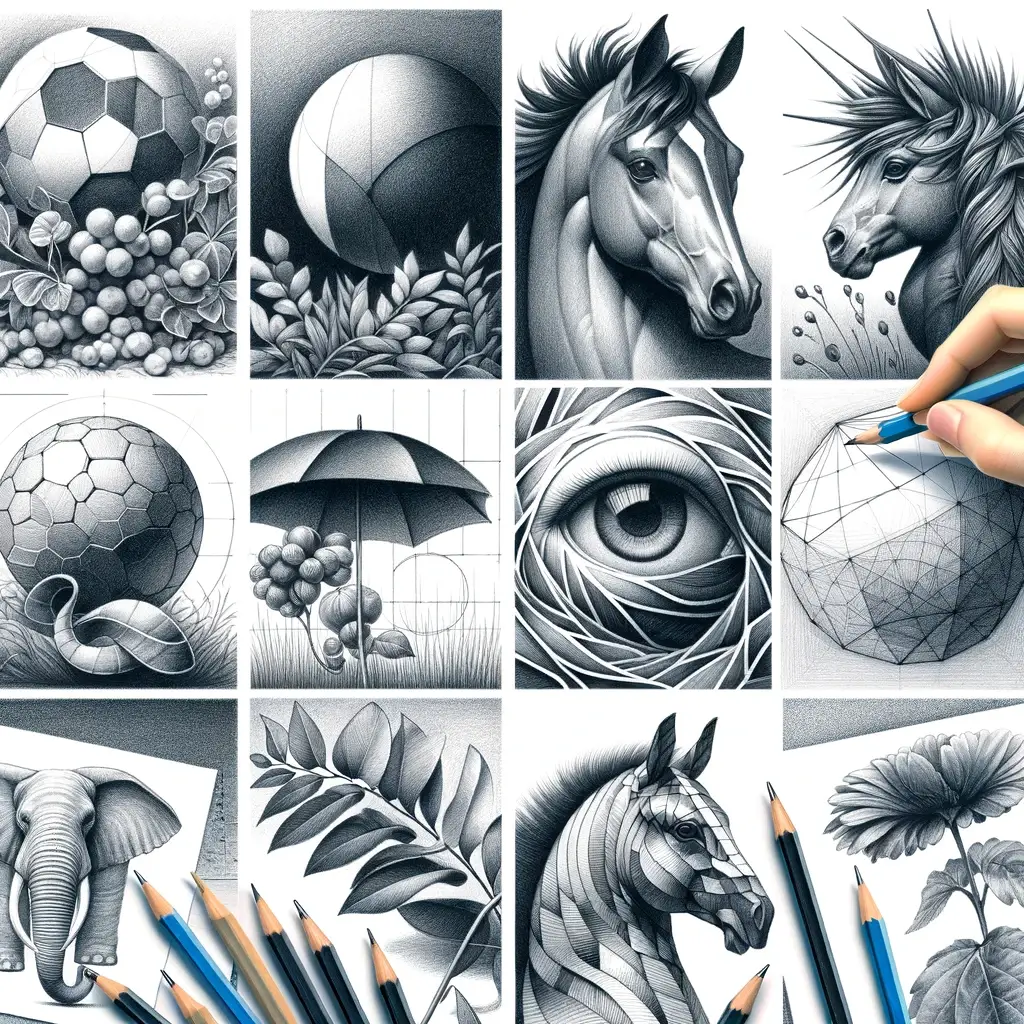
Start with a light touch, and as you grow more confident, press harder and add more layers. It’s a game of patience, but in the end, you’ll have a drawing with more depth than a telenovela plot twist.
Erasing for Highlights
Finally, let’s talk about the unsung hero of the pencil world: the eraser. It’s not just for correcting those “oops” moments. No, no! Your eraser is like a magic wand, lifting graphite to create stunning highlights and adding a sparkle to your subjects’ eyes.
Kneaded erasers are the VIPs here. They’re pliable, much like putty, and you can shape them to dab away tiny areas, giving life to those highlights. Want to make sunlight dance through the leaves in your landscape drawing? Use your eraser. Want to put a glint in the eye of your figure in a figure drawing? Yep, the eraser’s your best friend.
So grab your pencil and eraser, and remember: every artist started with a simple line. Even if you feel timid now, with these techniques, you’re well on your way to creating pencil masterpieces filled with softness, depth, and highlights that pop! Keep practicing, and before you know it, you’ll be the one giving out tips for straightening curly hair. Oops, wrong tutorial—gesture drawing tips, I mean!
Pencil Drawing in Art History
Pencil drawing isn’t just for passing notes in class or doodling on the margins of your grocery list. It’s a storied art form with a rich history, full of twists, turns, and, of course, eraser shavings!
Graphite Greats: From Da Vinci to Koi
Let’s roll back the clock to the Renaissance, where the real party of pencil drawing started. You’ve likely heard of a fellow named Leonardo da Vinci, right? Well, he wasn’t just a fan of mysterious smiles and helicopter doodles; he was also a maestro of the graphite stick! His detailed anatomical sketches had more layers than your Aunt Edna’s lasagna and were created with a combination of graphite and metalpoint.
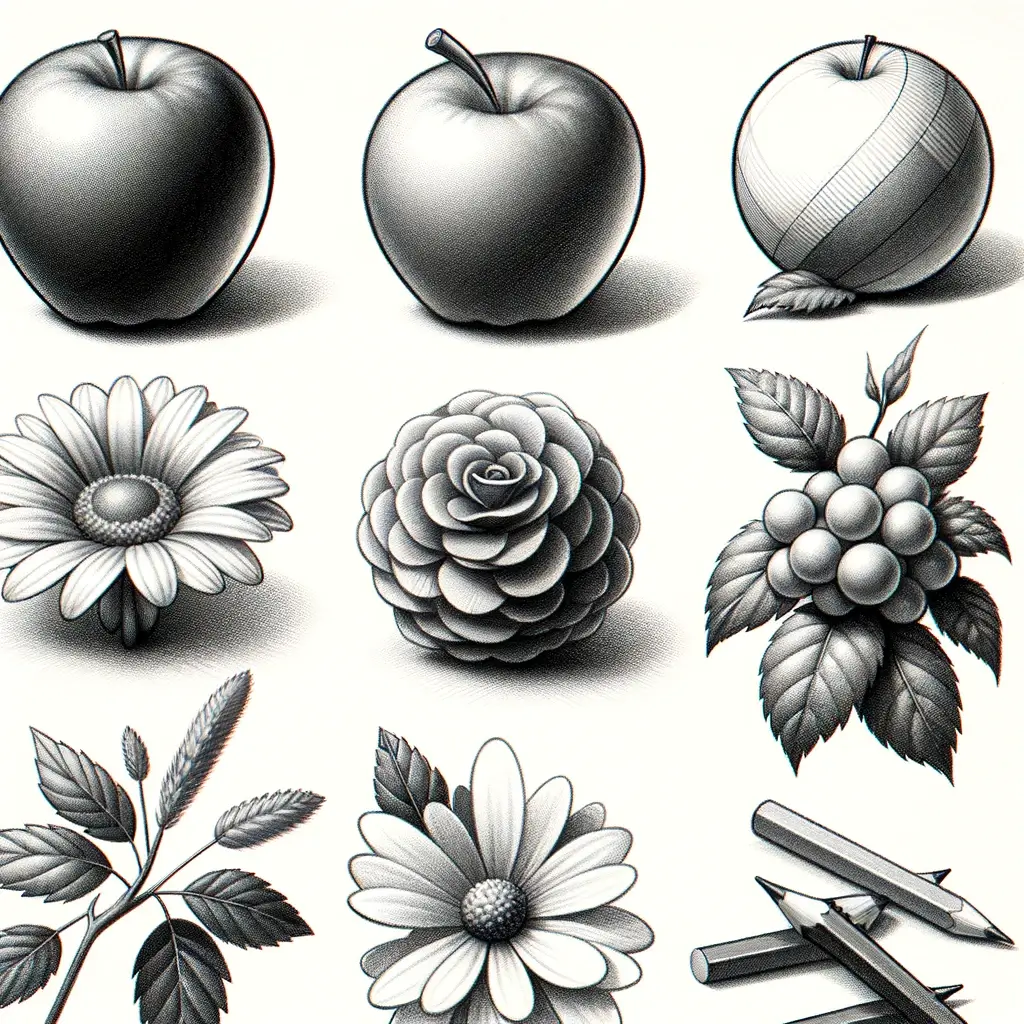
Fast forward to another Renaissance rockstar, Albrecht Dürer. This German painter and printmaker was the pencil’s PR manager, taking its reputation to new heights. His contributions to pencil drawing techniques have left fingerprints all over the art world, and let’s be honest, probably a lot of graphite smudges too.
Now, zoom to modern times, where artists like Diego Koi are keeping the pencil’s legacy alive. Koi’s work is like a bridge connecting the classical to the contemporary, proving once and for all that the pencil isn’t just for sketching your latest dream home or fantasy wardrobe.
The Evolution of Pencil Artistry
Pencil drawing has been the go-to method for artists who want to get their ideas down without the mess of paint or the chisel chips of sculpture. From the early days of da Vinci and Rembrandt to your Sunday figure drawing class, the pencil has been there, quietly making its mark.
It’s the Swiss Army knife of the art world; whether you’re laying the groundwork for a Sistine Chapel-esque masterpiece or just doodling to pass the time, the pencil is your trusty sidekick. It’s a foundational skill as essential as flour in your kitchen; without it, you can’t bake up those more complex artworks, like paintings and statues that make people say, “Ooh!” and “Aah!”
And let’s not forget about those nifty techniques that have evolved over the years. From cross hatching to gesture drawing, and line drawing to perspective drawing, these methods aren’t just fun to say; they breathe life into your creations, giving them depth, emotion, and that “I can’t believe you did that with a pencil!” factor.
Practice Makes Perfect
Alright, all you aspiring artists out there, grab your trusty pencils because it’s time to dive into some practice techniques that are sure to sharpen your skills (pun intended)! Remember, the pencil is mightier than the sword… especially when it comes to pencil drawing. So let’s get those pencils dancing across the paper like nobody’s watching!
Negative Space and Contour Drawing
You’ve probably spent a lot of time focusing on the objects you’re drawing, but what about the space around them? That’s right, I’m talking about negative space – the silent hero of the art world. It’s like the bass player in a rock band: often overlooked, but boy does it make the lead guitar look good.
Negative space drawing is like a game of optical hide and seek. You focus on drawing the spaces around the object, not the object itself. This little switcheroo can dramatically improve your ability to see shapes, distances, and angles accurately. Your drawing will pop out like a pop-up book in a 3-D movie.
And then there’s contour drawing. Imagine you’re a spy tracing the outlines of an object without lifting your pencil or looking at your paper. It’s a true test of hand-eye coordination and a great way to practice precision without peeking. You’ll be surprised at how much your drawing can resemble your cat and not a furry alien.
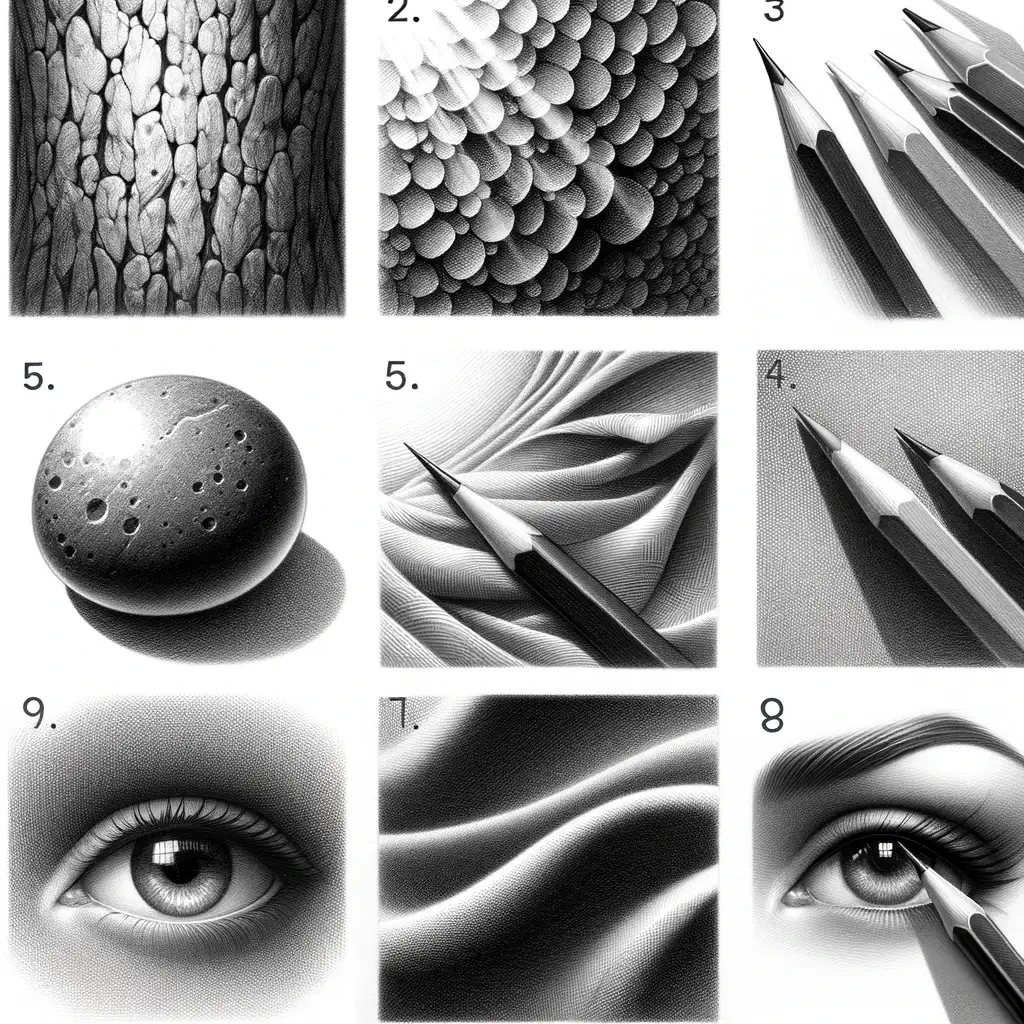
Gesture Drawing for Energy
Ever feel like your drawings look a little stiff? Like they’ve been doing the mannequin challenge for a bit too long? Enter gesture drawing – the art of capturing the essence of movement and form faster than a toddler escapes from a high chair.
With gesture drawing, your pencil gets to go on a speed date with your paper, creating quick, loose sketches that capture the energy and motion of your subject. It’s a fantastic exercise to loosen up and inject some life into your artwork. So, let your pencil do the cha-cha and watch as your drawings go from frozen to fabulous.
So, whether you’re doodling in the margins of your grocery list or crafting a masterpiece that would make Da Vinci raise an eyebrow, these exercises are your ticket to becoming a pencil drawing pro. Remember, in the realm of drawing, practice doesn’t just make perfect – it makes permanent. Now go forth and sketch like the wind!

